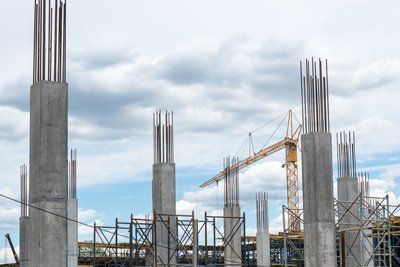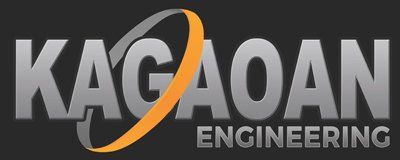Deep Foundation Elements Consultants - NYC, Manhattan, The Boroughs, Nassau County, Suffolk County, Long Island, and New Jersey - Kagaoan Engineering

Deep Foundation Element Consulting
Large buildings and heavy loads require complex designs and intense scrutiny and oversight. Kagaoan Engineering is a local engineering firm with extensive experience handling these types of projects.
Our team of specialists coordinates testing, inspections, workflow, materials, and the budget to create and install durable foundations compliant with local and federal safety codes and regulations.
Contact us
for free consultation.
What Are Deep Foundation Elements?
In general, foundations have several parts like footers, piers, walls, columns, and supports. Deep foundation elements are these components and others that make up foundations. These structures extend further into the ground than standard substructures. The pieces can be wood, metal, or concrete. A composite mix uses a combination of materials like timber and iron. Deep foundation elements may include stabilizers, grout, slurry mixes, and cement. How these components go into the ground varies as well.
Soil Strengthening
- Some builds require a stabilizing unit to make the soil compact, allowing it to withstand more weight. These materials may include grout, lime, or chemical additives. Adding these items directly to the soil help shore up loose dirt above or around the foundation.
Caissons or Drilled Piles
- These elements have several names, including cast-in or drilled piers. Construction crews drill out space for these forms and position them in the ground. Then, concrete or a mix of materials goes into the interior of the pile. The size, number, diameter, and type of insert depend on many things, including the soil's groundwater levels and density. Because uneven ground requires the insertion of piles of varying lengths, special observation by a trained individual is a requirement of local code. Deep foundation elements consultants create a foundation plan that shows all the structure's measurements and includes specific notes about each element. This plan uses the engineering blueprints to develop accurate data about the project and helps every party stay on task with the build.
Driven Piles
- Our engineers and architects work with project coordinators and builders to design subgrade structures with pre-made piles. They drive these structures into the soil to the required depth. There are two advantages of using this element in a deep foundation build. One, the installation causes a frictional force on the outside of the pile. This pressure increases the amount of weight they can put on the foundation. Second, there are no separate testing requirements when using this element.
Splices
- These elements connect two shafts for driven piles. Each piece of steel or timber connects via a fastener on each side. Engineers can connect concrete piles with these splices using other materials. Composite piers or piles use a combination of concrete and metal or woodpiles.
Helical Piles
- These piles go into the ground in a much different way than drilled or driven piles. Construction crews turn these piles into the soil mechanically. The twisting motion produces additional friction that strengthens the foundation.
Other Foundation Elements
- Installing piles via water pressure is one method they use in Norway and other areas with dense ground packs. This method helps the piles go into the soil easier. The water adds moisture to reduce friction. Using augers to put in a concrete mix is another method of creating deep foundation elements. Sheet piles and suction piles are other options, depending on need and cost restraints.
What are the Differences Between Shallow and Deep Substructures?
Shallow foundations handle smaller weight loads than deep foundations. These structures only extend about three feet into the soil. Deep foundations go below unstable ground soil to reach denser material. In areas where the ground is loose, stabilizing materials may be necessary to compact the earth. Lime or binders can strengthen the soil and make it denser.
Deep foundations are typical in NYC because of the abundance of skyscrapers. Building structures on this scale requires extensive knowledge of local ground conditions, code requirements, supply channels, and engineering changes. Installing these structures means having a special inspector on-site to check each step of some processes.
Special Oversight and Inspections are Necessary During Deep Foundation Builds
Deep foundation elements consultants understand the complex laws and requirements for these builds. Our team regularly works with city inspectors to ensure all deep foundation projects adhere to code. Navigating the permit processes and tracking the dates and times of each deep foundation element requires exceptional attention to detail.
Building the Foundation for a Skyscraper Takes a Diverse Team
From architects to engineers and geotechnical specialists, building deep foundations is exceptional work. Consistent testing and measuring ensure these builds are safe and capable of handling the heavy loads in the plans. Working together, all crews can effectively and efficiently navigate the build process.
When challenges arise, our team has the skills and experience to develop a custom solution. Kagaoan Engineering works with many major builders and owners to personalize deep foundation elements to fit the design, code, and budget needs. We understand the importance of tight deadlines and quickly seeking permits. Organizing the numerous specialties and reducing idle time helps save the build deadline and the bottom line. Our goal is to assist our clients using decades of experience and local knowledge to conduct deep foundation builds.
At Kagaoan Engineering, our professionals have the knowledge and equipment to handle these remarkable projects. You need people with the best qualifications and hands-on experience to conduct the testing and submit the right paperwork for these intricate designs. Whether digging or driving the piles, the end result is creating subsurface structures that withstand the elements. For a consultation with our deep foundation elements consultants, contact Kagaoan Engineering at 516-208-1533.
Please contact us
today!
About Kagaoan Engineering
Every member of Kagaoan Engineering is an experienced professional who brings distinct strengths and specialities to the company. We work together as team to ensure that your project has the skill sets required to succeed.

